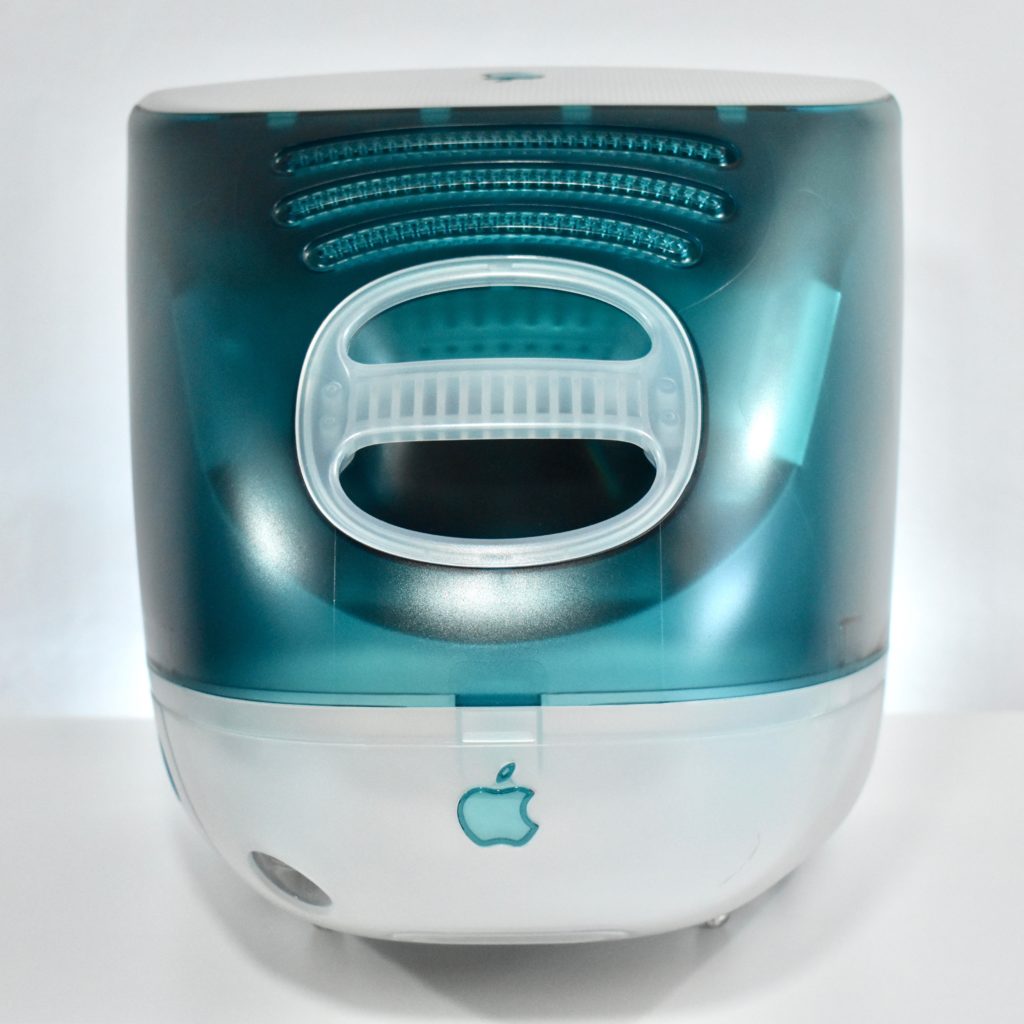The original iMac was introduced on May 6, 1998, and shipped August 15, 1998. It featured a 233 MHz PowerPC 750 (G3) processor, 32 MB of RAM, a 4.0 GB EIDE hard drive, and a tray loading CD-ROM drive. Its screen was a 15-inch CRT display.
The original iMac was available in one color called “Bondi blue,” named for the blue-green color of the water at Bondi Beach near Sydney, New South Wales, Australia. “Bondi” is an [Australian] Aboriginal word meaning “water breaking over rocks.”
This was the first consumer computer product released after Steve Jobs returned to Apple as interim CEO. The iMac was primarily credited with returning Apple to profitability and re-establishing Apple’s commitment to simplicity and design, but at the time was criticized for dropping the floppy disk drive and adopting the emerging USB standard.
The “i” in “iMac” has been described by Apple to represent “Internet,” but Steve Jobs also specified the “i” to mean internet, individual, instruct, inform, and inspire in a presentation in 1998.
Although the original iMac was not meant to be user-upgradable, it did contain what was referred to at the time as a “mysterious” slot behind the hinged side door called the “Mezzanine” slot. Inside the iMac was a Mezzanine connector soldered on to the motherboard. Officially, Apple never explained its purpose, but a few developers created expansion products that used the slot and/or port. I installed one such port in a few iMac computers in 1999, namely the Griffin iPort that added an Apple serial port and video-out port. Although the Griffin iPort didn’t use the Mezzanine internal connector, it did use the Mezzanine slot to make the ports available.
The Revision A iMac (M6709LL/A) and Revision B iMac (M6709LL/B) are identical with the exception of graphics systems. Revision A (August 15, 1998) had an ATI Rage IIc graphics with 2 MB of VRAM, and Revision B (October 26, 1998) had an ATI Rage Pro Turbo graphics with 6 MB of VRAM.
Source: EveryMac.com, LowEndMac.com, Wikipedia, and Business Insider









